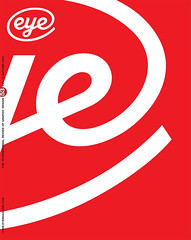Autumn 2004
The organic type designer
Bram de Does, Typographer & Type Designer
Mathieu Lommen and John A. Lane. Idea Books, €65In the early 1980s, being a type designer was a rarity, and publishing a typeface was something special. The presentation of a good typeface, such as Bram de Does’s Trinité in 1982, was quite an event. Extremely elegant, it brought together the best aspects of the typefaces De Does adored.
Trinité offered a range of choices that were unheard of at that time: three different weights, italics, condensed, small caps, lining and outhanging numerals, ligatures and swash strokes to add to the first or last letter of a line to mark the beginning or the end. These choices could be ordered with three lengths of ascenders and descenders – hence the name Trinité. As well as multiple choices, Trinité had the right amount of calligraphy added to the letterforms to give it great flavour, and with the right tracking it makes elegant rhythms within the lines of type set, generating grey blocks of text. But Trinité does not work well in small sizes, or in rougher forms of printing. This prompted De Does to create his second face, Lexicon, in 1992. Again a work of great quality, it went unnoticed because it was published in the eye of the digital type storm that was raging at that time.
Bram de Does, Typographer & Type Designer reveals what makes Trinité and Lexicon good. The part of the book that pleased me the most was the preface written by De Does. The opening reads: ‘I often try to give people the impression that I am perfectly ordinary, but what I probably actually like best is extreme originality. From the reactions of those around me I can tell they’re not entirely convinced. Genuinely ordinary people think I’m a bit crazy and really crazy people think I’m too ordinary – or, worse, conventional. That way, of course, you never belong anywhere. Doubtless it all has to do with the war and my upbringing.’
He talks about four aspects of his character: thoroughness, balance, precision and charm. He sees these qualities in his typefaces and states that their success is due to the fact that none of them has the upper hand. It makes me smile to read De Does writing about his mother not liking the lowercase ‘t’ in both faces, because of the short ascenders. She couldn’t understand why typographers were so enthusiastic about the work of her son.
The preface also reveals that De Does had decided originally to dedicate his life to growing organic vegetables and fruit. It was the opportunity to design a typeface – offered by his employer, the Dutch printing and publishing house Enschedé, that made him switch course.
The first half of the book describes De Does’s life story – his absence from his studies, his sudden career moves, his doubts. However, this (overly long) history didn’t give me what I wanted – the means to understand De Does’s work better.
The second part tells the story of the making of Trinité and Lexicon, and of the typographic Kaba ornaments. Pages and pages are devoted to all kinds of facts about the dealing and wheeling of the various parties involved. Again, I wondered who would be interested in such detail? In the final part, seven book designers talk about why they like to use Trinité and Lexicon, but their remarks failed to show any new typographic horizons.
Throughout the book a variety of De Does’s work is shown. His strongest point is clearly the micro world of type design. However, the book doesn’t deliver what type lovers really would like to see: complete character sets of both typefaces, in a reasonable size, or maybe in several sizes. Without it, the reader can’t figure out what De Does had in mind. The choice of the paper doesn’t make sense either, as the rough stock makes a lot of details disappear in the screened reproductions.
The text suffers from being written by design critics for design critics, though fortunately De Does’s own writing does hit the right note. De Does eventually left typography, for his first love – ecological farming. I imagine his plants will have the most well curved leaves and be the best tracked of all in The Netherlands. I hope that sometime, someone will write a better book about that.
Chris H. Vermaas, designer, Amsterdam
First published in Eye no. 53 vol. 14, 2004
Eye is the world’s most beautiful and collectable graphic design journal, published quarterly for professional designers, students and anyone interested in critical, informed writing about graphic design and visual culture. It is available from all good design bookshops and online at the Eye shop, where you can buy subscriptions, back issues and single copies of the latest issue. You can also browse visual samples of recent issues at Eye before You Buy.

